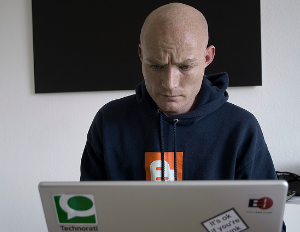Famous bloggers go to mailing lists

When entrepreneur Jason Calacanis closed his blog in 2008, replacing it with an e-mail newsletter available only by subscription, his step was regarded as a personal reaction to offensive readers' comments, and not the beginning of a trend. But now more and more famous bloggers have joined the venture. The founder of the Drop.io startup, Sam Lesin, recently announced the closure of a personal blog and the launch of a paid e-mail list, as well as the Letter.ly service, in which anyone can organize a paid mailing list.

In a blog at Drop.io, Lesin said that when starting to write his personal blog, he was guided by a set of goals: to better understand the environment; as a public person, protect your identity online so that no one can write on his behalf; get rid of carelessness in thinking and become stricter in judgment; Seriously to engage in a blog as a normal work, as many people spend their time on reading and it is necessary to approach to writing with full responsibility.
But after two years, he felt that he had achieved all his goals, but he still had the feeling that writing to a publicly accessible blog would be insincere and even hypocritical about his belief about the value of information. Letter.ly was designed in such a way that each of the writers issuing their newsletter can set their own price for a subscription. For example, subscription to the blog Lesina costs $ 1.99 per month. Sam also noted that there are more and more factors that contribute to reducing activity on blogs, such as Twitter, Facebook or other social tools that are easier to use and take less time.
After creating Letter.ly, several other bloggers joined Lesin, including AnyClip startup co-founder Nate Westheimer, who is about to blog, but will publish all the most interesting things on a paid subscription. Co-founder of Aviary.com, Michael Galpert, also launched his own newsletter via Letter.ly. And Jason Baptiste, co-founder of several startups, including Cloudmatic, argues that while mailing is a bit old-fashioned, it is still a good business.
')

A Russian example is the user LJ hectop, the author of a blog about aviation. He recently stopped running LiveJournal, moved the blog to a separate website, and began charging readers a fee of $ 5 per month subscription or $ 50 per year. Russian bloggers are not at risk of offering a paid subscription to their blogs. For example, Alex Exler believes that he can earn more from advertising in a free blog than from a paid subscription.
Not everyone agrees that switching from a blog to a paid newsletter is a good move, however, for entrepreneurs and founders of startups who exchange ideas with a wide audience, such a move can be of some value, especially if you are not well known. Nevertheless, your own blog is still a means to increase popularity in the network.
Source: https://habr.com/ru/post/287662/
All Articles